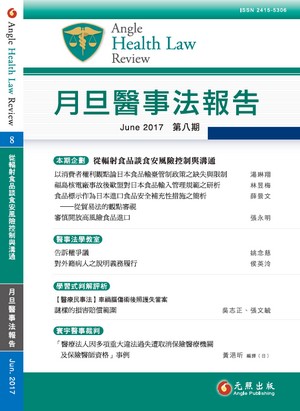食品標示作為日本進口食品安全補充性措施之簡析──從貿易法的觀點審視【本期企劃】 試閱
Reflection on Labeling as Supplementary Measure for the Controls over Foods from Japan
於2016年12月25日召開的「日本核災後食品風險危害評估及管理及茨城、櫪木、千葉、群馬食品開放與否公聽會」中,與會者決議要求日本食品之標示,必須更加詳細明確,產地標示必須具體到「都、道、府縣」,而不能僅標示日本國。從行政院整體的規劃方向觀察,從嚴標示似乎是作為開放群馬四縣部分產品進口的輔助性措施。希望透過標示之方式,將最終的決定權交由各別消費者,由消費者自行決定其所欲承受的風險。雖然目前開放範圍仍維持原狀,但詳細標示的要求卻已開始執行。從結果來看,對日本食品的進口之管制不但沒有放寬,反而變得更加嚴格。立基於不影響民眾健康保護的大前提之下,分析日本進口食品標示規範是否與臺灣於世界貿易組織下所負之義務有所扞格。
In the public hearing on “Risk Evaluation of Foods Imported from Japan and Lifting Ban on Foods from Ibaraki, Tochigi, Chiba, Gunma,” the participant concluded that the exact place of food production in Japan must be disclosed to the public through labeling, tag, or signs etc. According to the proposal of the Expectative Yuan, The labeling requirements serve as a supplementary measure, or replacement to the import bans on foods from Ibaraki, Tochigi, Chiba, and Gunma. By virtue of labeling, the consumer could make the finial call on the risk level that they are willing to undertake. In turn, the competent authority would lower the level of protection for public health, which is also acceptable to the competent authority. However, the connection between the imports bans and new labeling requirements were broken. The import bans were not lifted, while the new labeling requirements have been imposed. As a result, the measures concerning foods from Japan became even more trade restrictive. Under the premises of “no harm to public health,” this essay provides a brief analysis on the consistency of the new labeling requirements with the World Trade Organization laws.
040-056







